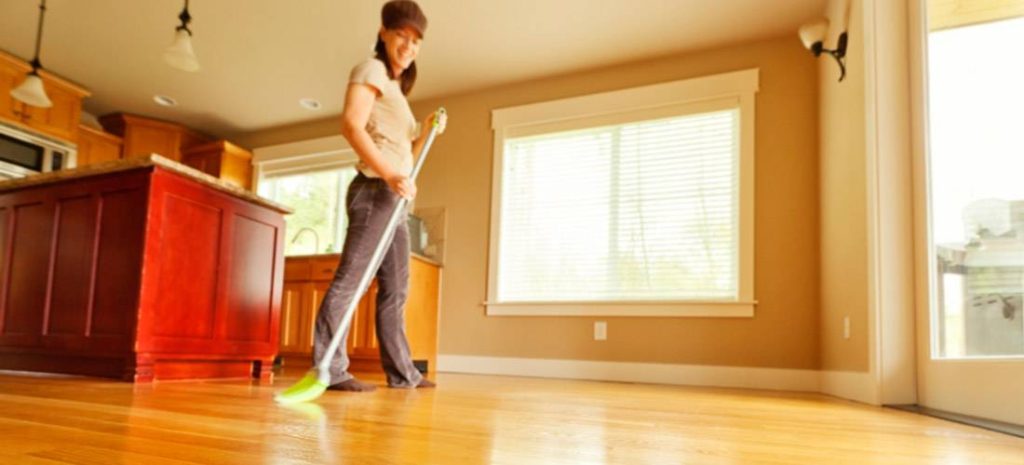
Hardwood floor care is essential for preserving the beauty and longevity of your investment. Imagine walking into your home, greeted by the warm glow of gleaming hardwood floors, a testament to years of careful maintenance. But maintaining this stunning centerpiece requires more than just occasional sweeping. Many homeowners struggle with unexpected scratches, stubborn stains, or the overall dulling of their floors over time. This thorough guide offers a step-by-step approach to hardwood floor care, empowering you to keep your floors looking their absolute optimal. We will cover everything from daily cleaning routines to tackling more challenging issues and protecting your investment for the long term. Let’s dive in and ensure your hardwood floors remain a source of pride and enjoyment for years to come.
Daily and Weekly Cleaning: The Foundation of Hardwood Floor Care
Maintaining the pristine condition of your hardwood floors begins with a consistent cleaning routine. Daily care focuses on preventing dirt buildup, the primary culprit behind scratches and dullness. A simple sweep or vacuuming with a soft-bristled attachment effectively removes surface dust and debris. Avoid using harsh brushes or attachments that could scratch the delicate finish.
The Importance of Regular Sweeping and Vacuuming
Regular sweeping is vital for removing everyday dirt, dust, and small particles that can scratch your hardwood floors over time. Think of tiny grains of sand; these can act like sandpaper, slowly abrading the finish. Vacuuming once or twice a week, especially in high-traffic areas, is also recommended to remove finer particles unseen by the naked eye. Always use a vacuum with a soft brush attachment, which prevents damage to the floor surface.
Weekly Mopping: The Gentle Approach
Weekly mopping helps maintain cleanliness but requires a gentle approach. Avoid harsh chemicals and excessive water, both of which can damage the wood. Use a damp (not wet) mop or cloth, ideally with a specialized hardwood floor cleaner. Work in small sections, ensuring each area is thoroughly cleaned before moving to the next, preventing streaks and water damage. A clean, well-wrung-out microfiber mop is often the most effective tool for this task. It absorbs dirt efficiently and is less likely to leave streaks.
Dealing with Spills: Quick Action is Key
Accidents happen. Spills should be cleaned up immediately to prevent staining and water damage. Blot up spills gently using a clean cloth, and avoid rubbing, which can spread the spill and scratch the wood. If a spill occurs near a heat source, immediate action is crucial to avoid discoloration. For example, a spilled glass of red wine requires an immediate response to prevent staining. Blot the spill gently and liberally with a clean absorbent cloth or paper towel to soak up the excess wine as soon as possible. If the stain persists, follow up with a suitable wood cleaner designed for hardwood floors.
Addressing Scratches and Minor Damage: Repair and Restoration
Even with careful maintenance, minor scratches and damage may occur over time. Fortunately, many minor issues can be addressed at home, saving you the cost and hassle of professional repair. However, tackling these issues promptly is crucial to prevent the damage from becoming more severe.
determineing varied Types of Scratches
Scratches can scope from superficial surface scratches to deeper gouges. Superficial scratches, often caused by furniture scraping or high-traffic areas, can usually be buffed out. Deeper gouges may require more extensive repair. Pay close attention to the severity of the scratch to determine the appropriate repair method. Superficial scratches might disappear simply by using a hardwood floor cleaning and polishing product. Deeper ones might require the use of a wood filler.
Buffing Out Minor Scratches
For minor scratches, a specialized hardwood floor repair kit often includes a buffing compound designed to fill and smooth out the scratches. Apply it carefully following the manufacturer’s instructions and use a soft cloth for application and final buffing. This restores the smooth finish and hides the imperfections. This approach helps to minimize the visibility of minor scratches and imperfections, maintaining a consistent surface appearance.
Repairing Larger Damage
For deeper scratches or gouges, a wood filler is usually necessary. select a filler that matches the color of your hardwood floor as closely as possible. Apply it according to the product instructions, allow it to dry completely, and then sand and polish the area to blend it seamlessly with the surrounding floor. A touch-up pen or stain can further enhance the blending process. Always test the filler in an inconspicuous area to check for color matches and potential reactions before applying to the damaged area. Remember, a professional assessment is recommended for significant damage or extensive repairs.
Protecting Your Hardwood Floors: Preventative Measures
Proactive measures significantly contribute to the longevity and beauty of your hardwood floors. Preventing damage is always more effective and less costly than repairing it. Implementing these strategies minimizes wear and tear, keeping your floors looking pristine.
Using Floor Mats and Rugs
Strategic placement of mats and rugs in high-traffic areas such as entrances and doorways significantly reduces the amount of dirt and debris tracked onto your floors. Consider using larger area rugs in living spaces to further protect your floor’s finish. select mats made from durable materials that effectively trap dirt and moisture. Regular cleaning of these mats is crucial to maintain their efficacy. The key is to trap the dirt before it gets a chance to harm the finish.
Protecting Against Furniture Damage
Heavy furniture can easily scratch your hardwood floors. Use felt pads or protectors beneath furniture legs, preventing scratches from movement and protecting against significant damage. Regularly inspect and replace these protectors when they become worn to guarantee continued protection. Additionally, avoid dragging furniture across the floors; instead, lift and move it carefully. Hardwood floors are susceptible to damage from furniture moving around, and this protective measure ensures a long-lasting and pristine finish.
Maintaining Proper Humidity Levels
Wood is susceptible to changes in humidity. Excessive dryness can cause gaps and cracks, while excess moisture can lead to warping and damage. Maintain a consistent humidity level in your home, ideally between 30% and 50%, to prevent these problems. A humidifier or dehumidifier can help regulate the moisture levels in your home, protecting your investment. Wood expansion and contraction can cause significant issues, so this is a critical preventative measure.
Deep Cleaning and Refinishing: When Professional Help is Needed
While regular maintenance covers everyday cleaning and small repairs, more intensive deep cleaning and periodic refinishing are essential for long-term hardwood floor care. These steps are crucial for maintaining your hardwood floors’ original beauty, often requiring professional expertise.
Deep Cleaning: Removing Built-Up Grime
Over time, even with regular cleaning, dirt and grime accumulate deep within the wood’s grain. A professional deep cleaning using specialized equipment and products can remove this buildup, restoring the floor’s original shine. Professional cleaners have the expertise and tools to do this effectively without damaging your floors. This may involve steam cleaning or using specialized cleaning solutions to remove stubborn stains and embedded dirt.
Refinishing: Restoring the Original Beauty
Refinishing is a more extensive process that involves sanding the old finish down, reapplying stain if desired, and then applying a new protective coat of sealant. This rejuvenates your floors, making them look almost brand new. Professional refinishing requires specialized equipment and expertise to ensure even outcomes and a long-lasting, beautiful finish. Refinishing is an investment that significantly prolongs your hardwood floors’ life. It is recommended to refinish your hardwood floors every 5-10 years, depending on the amount of wear and tear and the type of finish.
The Cost of Professional Services
Keep in mind that the cost of professional services for deep cleaning and refinishing will vary depending on your location, the size of your floor area, and the extent of damage or wear. It’s essential to obtain multiple quotes from reputable professionals and compare their services before making a decision. The cost-benefit examination should involve considering the long-term value and preservation of your hardwood floors. Professional services offer expertise and the proper tools to offer excellent and lasting outcomes.
Choosing the Right Products: Hardwood Floor Cleaners and Sealants
The products you use are crucial for maintaining your hardwood floors. Opting for high-quality, specifically designed hardwood floor cleaners and sealants is an investment in your floors’ longevity. Using inappropriate products can cause damage, leading to unnecessary repairs and expenses.
selecting the Appropriate Cleaner
Always select hardwood floor cleaners that are specifically formulated for use on hardwood floors. Avoid harsh chemicals, abrasive cleaners, and excessive moisture. Look for pH-neutral cleaners that are gentle yet effective in removing dirt and grime. Test any cleaner on a small, inconspicuous area first to ensure it doesn’t damage or discolor your floors. Many commercially available cleaners are designed to not only clean but also to protect the finish and enhance the shine.
Understanding the Importance of Sealants
Sealants protect your floors from water damage, scratches, and stains. If your hardwood floors are not properly sealed, they are more susceptible to damage from moisture and everyday wear and tear. Applying a sealant adds an extra layer of protection to preserve the integrity and lifespan of your hardwood floors. Consider having your hardwood floors professionally sealed or resealed periodically to maintain optimal protection. Professional sealing is often part of the refinishing process, providing a long-lasting finish.
Regular Inspection and Maintenance
Regularly inspect your hardwood floors for any signs of damage or wear. Promptly addressing minor issues can prevent them from escalating into major problems, saving you time, money, and effort in the long run. Establishing a regular inspection routine ensures that issues are caught early, allowing for preventative measures or timely repair.
Maintaining hardwood floors is a long-term commitment, but with proper care, your floors will remain a beautiful and valuable asset to your home for years to come. Remember the key takeaways: regular sweeping and mopping, prompt stain treatment, and periodic refinishing. By following these steps and addressing any issues promptly, you can ensure that your hardwood floors retain their luster and beauty, adding value to your home. Don’t hesitate to consult a professional if you encounter any significant damage or are unsure about a specific cleaning or maintenance procedure. Invest in your hardwood floors today for a beautiful tomorrow!
